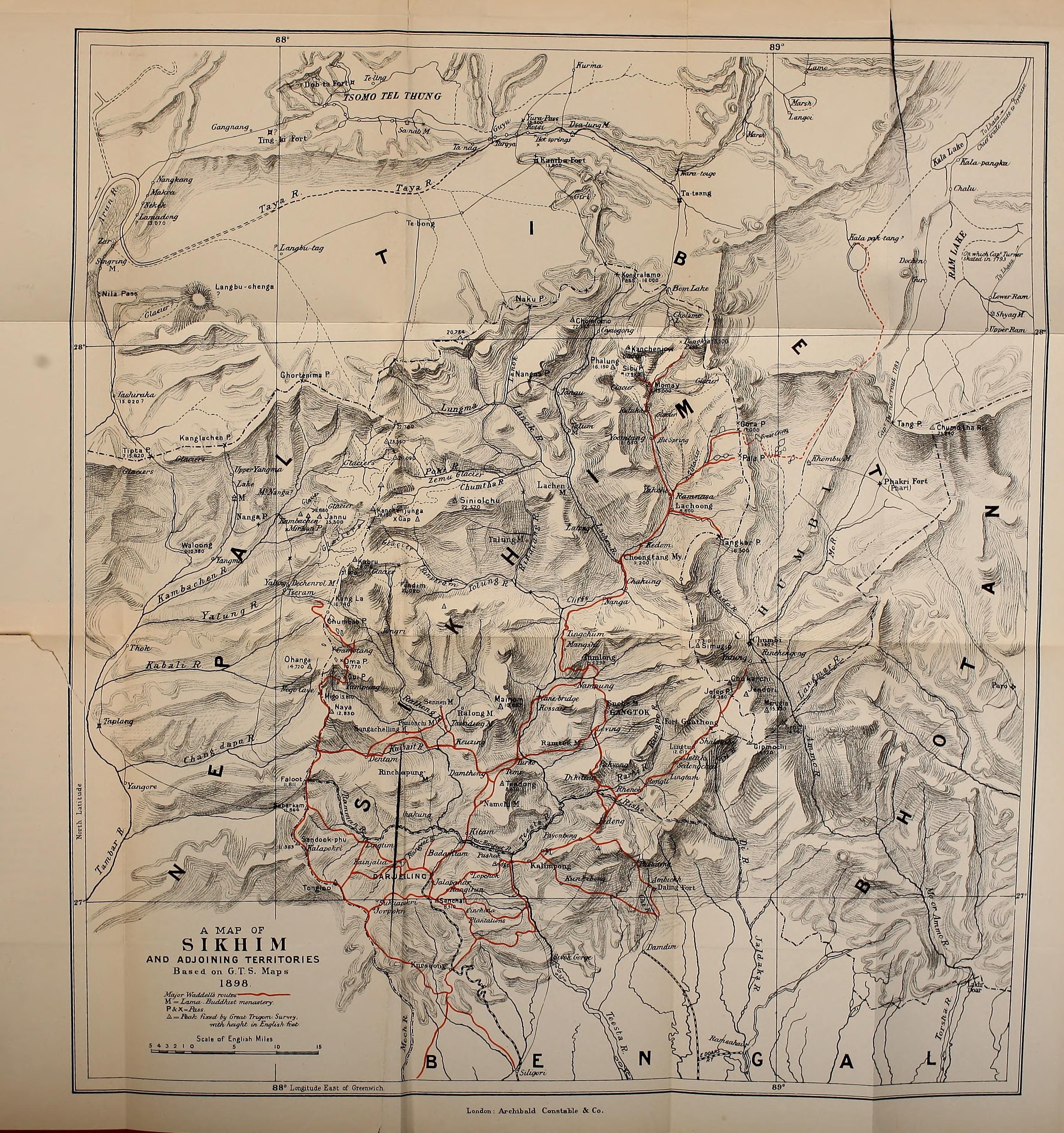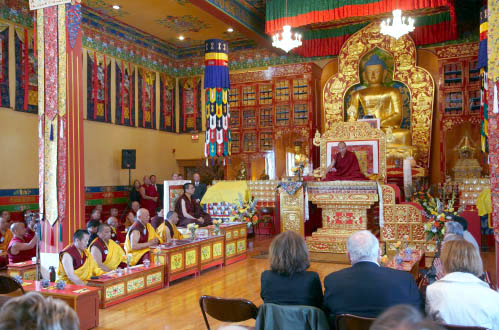|
Goshir Gyaltsap
Goshir Gyaltsab Rinpoche () is a leading incarnate lama (tulku) in the Karma Kagyu lineage of Tibetan Buddhism. He is considered to be an emanation of Vajrapani. The first Gyaltsab Rinpoche Paljor Dondrub (1427–1489) was born in Nyemo Yakteng and received the title ''Goshir'' () from the Emperor of China. In Tibet, Gyaltsab Rinpoche is known as Tsurphu Goshir Gyaltsab Rinpoche. He is the regent looking after Tsurphu monastery and the interests of the Karmapas in between two Karmapas. In Tsurphu, Gyaltsab Rinpoche's monastery Chogar Gong lies directly behind Karmapa's monastery. Gyaltsab Rinpoche was recognized by the Sixteenth Karmapa before he was born in 1954 and after the official enthronement by the 16th Karmapa in 1959, Gyaltsab Rinpoche made the journey to Sikkim together with the Karmapa. List of Gyaltsab Rinpoches #Paljor Dondrub (1427–1489) #Tashi Namgyal (1490–1518) #Drakpo Paljor (1519–1549) #Dragpa Dundrub (1550–1617) #Dragpa Choyang (1618 ... [...More Info...] [...Related Items...] OR: [Wikipedia] [Google] [Baidu] |
Tulku
A ''tulku'' (, also ''tülku'', ''trulku'') is a reincarnate custodian of a specific lineage of teachings in Tibetan Buddhism who is given empowerments and trained from a young age by students of his or her predecessor. High-profile examples of tulkus include the Dalai Lamas, the Panchen Lamas, the Samding Dorje Phagmos, the Karmapas, Khyentses, the Zhabdrung Rinpoches, and the Kongtruls. Nomenclature and etymology The word སྤྲུལ or 'sprul' (Modern Lhasa Tibetan ) was a verb in Old Tibetan literature and was used to describe the བཙན་པོ་ btsanpo ('emperor'/天子) taking a human form on earth. So the ''sprul'' idea of taking a corporeal form is a local religious idea alien to Indian Buddhism and other forms of Buddhism (e.g. Theravadin or Zen). Over time, indigenous religious ideas became assimilated by the new Buddhism; e.g. ''sprul'' became part of a compound noun, སྤྲུལ་སྐུ་'sprul.sku' ("incarnation body" or 'tülku', and 'btsan' ... [...More Info...] [...Related Items...] OR: [Wikipedia] [Google] [Baidu] |
Karma Kagyu
Karma Kagyu (), or Kamtsang Kagyu (), is a widely practiced and probably the second-largest lineage within the Kagyu school, one of the four major schools of Tibetan Buddhism. The lineage has long-standing monasteries in Tibet, China, Russia, Mongolia, India, Nepal and Bhutan, with current centres in over 60 countries. The spiritual head of the Karma Kagyu is the ''Gyalwa Karmapa''; the 2nd through 10th Karmapas were principal spiritual advisors to successive emperors of China. The Karma Kagyu are sometimes called the "Black Hat" lamas, in reference to the Black Crown worn by the Karmapa. The Kagyu lineage claims a continuity of oral instructions transmitted from master to disciple.La Lignée du Rosaire d’Or' (“The golden rosary lineage”). This emphasis is reflected in the literal meaning of ''Kagyu''. The first syllable, ''ka,'' is said to refer to the texts of Buddha's teachings and to the master's verbal instructions. ''Ka'' has the double meaning of the enlightened meani ... [...More Info...] [...Related Items...] OR: [Wikipedia] [Google] [Baidu] |
Tibetan Buddhism
Tibetan Buddhism (also referred to as Indo-Tibetan Buddhism, Lamaism, Lamaistic Buddhism, Himalayan Buddhism, and Northern Buddhism) is the form of Buddhism practiced in Tibet and Bhutan, where it is the dominant religion. It is also in majority regions surrounding the Himalayan areas of India (such as Ladakh, Sikkim, Arunachal Pradesh, and a minority in Himachal Pradesh and Uttarakhand), in much of Central Asia, in the southern Siberian regions such as Tuva, and in Mongolia. Tibetan Buddhism evolved as a form of Mahāyāna Buddhism stemming from the latest stages of Indian Buddhism (which also included many Vajrayāna elements). It thus preserves many Indian Buddhist tantric practices of the post-Gupta early medieval period (500 to 1200 CE), along with numerous native Tibetan developments. In the pre-modern era, Tibetan Buddhism spread outside of Tibet primarily due to the influence of the Mongol Yuan dynasty (1271–1368), founded by Kublai Khan, which had ruled China, ... [...More Info...] [...Related Items...] OR: [Wikipedia] [Google] [Baidu] |
Vajrapani
(Sanskrit; Pali: Vajirapāṇi, meaning, "Vajra in ishand") is one of the earliest-appearing bodhisattvas in Mahayana Buddhism. He is the protector and guide of Gautama Buddha and rose to symbolize the Buddha's power. Vajrapāni is also called Chana Dorji and Chador and extensively represented in Buddhist iconography as one of the earliest three protective deities or bodhisattvas surrounding the Buddha. Each of them symbolizes one of the Buddha's virtues: Manjushri manifests all the Buddhas' wisdom, Avalokiteśvara manifests all the Buddhas' immense compassion, and Vajrapāni protects Buddha and manifests all the Buddhas' power as well as the power of all five tathāgatas (Buddhahood of the rank of Buddha). Vajrapāni is one of the earliest Dharmapalas of Mahayana Buddhism and also appears as a deity in the Pali Canon of the Theravada school. He is worshiped in the Shaolin Monastery, in Tibetan Buddhism and in Pure Land Buddhism (where he is known as Mahasthamaprapta a ... [...More Info...] [...Related Items...] OR: [Wikipedia] [Google] [Baidu] |
Emperor Of China
''Huangdi'' (), translated into English as Emperor, was the superlative title held by monarchs of China who ruled various imperial regimes in Chinese history. In traditional Chinese political theory, the emperor was considered the Son of Heaven and the autocrat of all under Heaven. Under the Han dynasty, Confucianism replaced Legalism as the official political theory and succession in most cases theoretically followed agnatic primogeniture. The lineage of emperors descended from a paternal family line constituted a dynasty. The absolute authority of the emperor came with a variety of governing duties and moral obligations; failure to uphold these was thought to remove the dynasty's Mandate of Heaven and to justify its overthrow. In practice, emperors sometimes avoided the strict rules of succession and dynasties' ostensible "failures" were detailed in official histories written by their successful replacements. The power of the emperor was also limited by the imperial burea ... [...More Info...] [...Related Items...] OR: [Wikipedia] [Google] [Baidu] |
Tsurphu
Tsurphu Monastery ( or Tölung Tsurphu (, "Tsurphu of Tölong") is a gompa which serves as the traditional seat of the Karmapa, the head of the Karma Kagyu lineage of Tibetan Buddhism. It is located in Gurum in Doilungdêqên District, Tibet Autonomous Region, China, from Lhasa. The monastery is about above sea level. It was built in the middle of the valley facing south with high mountains surrounding the complex. Tsurphu is a complex with walls up to thick. The gompa, the traditional seat of the Karmapa lamas, is about up the Dowo Lung Valley on the north side of the river. The original walls of the main building were up to 4 meters thick and 300 meters on each side (). The monks' residences were on the eastern side. History Tsurphu was founded by Düsum Khyenpa, 1st Karmapa Lama (1110-1193) in 1159, after he visited the site and laid the foundation for an establishment of a seat there by making offerings to the local protectors, the dharmapalas and territorial divinit ... [...More Info...] [...Related Items...] OR: [Wikipedia] [Google] [Baidu] |
Karmapa
The Karmapa (honorific title '' His Holiness the Gyalwa'' ��ྒྱལ་བ་, Victorious One''Karmapa'', more formally as ''Gyalwang'' ��ྒྱལ་དབང་ཀརྨ་པ་, King of Victorious Ones''Karmapa'', and informally as the ''Karmapa Lama'') is the head of the Karma Kagyu, the largest sub-school of the Kagyu (བཀའ་བརྒྱུད, ), itself one of the four major schools of Tibetan Buddhism. Karmapa was Tibet's first consciously incarnating lama. The historical seat of the Karmapas is Tsurphu Monastery in the Tolung valley of Tibet. The Karmapa's principal seat in exile is the Dharma Chakra Centre at Rumtek Monastery in Sikkim, India. His regional monastic seats are Karma Triyana Dharmachakra in New York and Dhagpo Kagyu Ling in Dordogne, France. Due to a controversy within the Karma Kagyu school over the recognition process, the identity of the current 17th Karmapa is disputed by some. See Karmapa controversy for details. Origin of the lineage ... [...More Info...] [...Related Items...] OR: [Wikipedia] [Google] [Baidu] |
Rangjung Rigpe Dorje
The sixteenth Gyalwa Karmapa, Rangjung Rigpe Dorje (; August 14, 1924 – November 5, 1981) was the spiritual leader of the Karma Kagyu lineage of Tibetan Buddhism. Followers believed him to be part of the oldest line of reincarnate lamas in Vajrayana Buddhism, known as the Karmapas, whose coming was predicted by the Buddha in the Samadhiraja Sutra. The 16th Karmapa was considered to be a "living Buddha" and was deeply involved in the transmission of the Vajrayana Buddhism to Europe and North America following the Chinese invasion of Tibet. He had many monikers, including “King of the Yogis”, and is the subject of numerous books and films. Biography Birth The 16th Karmapa was born in Denkhok in the Dergé province in Eastern Tibet, Kham, near the Dri Chu or Yangtze River. The previous Karmapa Khakhyab Dorje (1871-1922) left a letter setting forth the circumstances of his next incarnation. The Karmapa's attendant, Jampal Tsultrim, possessed the letter of prediction, which matc ... [...More Info...] [...Related Items...] OR: [Wikipedia] [Google] [Baidu] |
Kingdom Of Sikkim
The Kingdom of Sikkim (Classical Tibetan and sip, འབྲས་ལྗོངས།, ''Drenjong''), officially Dremoshong (Classical Tibetan and sip, འབྲས་མོ་གཤོངས།) until the 1800s, was a hereditary monarchy in the Eastern Himalayas which existed from 1642 to 16 May 1975, when it merged with the India, Republic of India. It was ruled by Chogyals of the Namgyal dynasty. History Nepalese-Bhutanese domination In the mid-18th century, Sikkim was invaded by both Nepal (then the Gorkha Kingdom) and Bhutan (then ruled by Gedun Chomphel) and was under both the Gorkha and the Bhutanese rule for more than 40 years. Between 1775 and 1815, almost 180,000 ethnic Nepalis from Eastern and Central Nepal migrated to Sikkim. After the British colonisation of India, however, Sikkim allied itself with British India as they had a common enemy – Nepal. The infuriated Nepalese attacked Sikkim with vengeance, overrunning most of the region including the Terai. ... [...More Info...] [...Related Items...] OR: [Wikipedia] [Google] [Baidu] |
Karma Triyana Dharmachakra
Karma Triyana Dharmachakra is a Tibetan Buddhist monastery in Woodstock, New York, United States, which serves as the North American seat of the 17th Gyalwa Karmapa, head of the Karma Kagyu lineage. It was founded in 1976 by the 16th Gyalwa Karmapa with Khenpo Karthar Rinpoche as abbot. He held this position until his death in 2019. The Third Bardor Tulku Rinpoche stayed in the United States to help Khenpo Karthar Rinpoche and Mr. Tenzin Chonyi establish and develop Karma Triyana Dharmachakra. Snow Lion Publications
Shambhala Publications is an independent publishing co ...
[...More Info...] [...Related Items...] OR: [Wikipedia] [Google] [Baidu] |
Kagyu Tulkus
The ''Kagyu'' school, also transliterated as ''Kagyü'', or ''Kagyud'' (), which translates to "Oral Lineage" or "Whispered Transmission" school, is one of the main schools (''chos lugs'') of Tibetan (or Himalayan) Buddhism. The Kagyu lineages trace themselves back to the 11th century Indian Mahasiddhas Naropa, Maitripa and the yogini Niguma, via their student Marpa Lotsawa (1012–1097), who brought their teachings to Tibet. Marpa's student Milarepa was also an influential poet and teacher. The Tibetan Kagyu tradition gave rise to a large number of independent sub-schools and lineages. The principal Kagyu lineages existing today as independent schools are those which stem from Milarepa's disciple, Gampopa (1079–1153), a monk who merged the Kagyu lineage with the Kadam tradition. The Kagyu schools which survive as independent institutions are mainly the Karma Kagyu, Drikung Kagyu, Drukpa Lineage and the Taklung Kagyu. The Karma Kagyu school is the largest of the sub-school ... [...More Info...] [...Related Items...] OR: [Wikipedia] [Google] [Baidu] |
.jpeg/1200px-Tibetan_Buddhism_(214837929).jpeg)

_at_Rumtek_Monastery%2C_Sikkim_in_1971.jpg)


